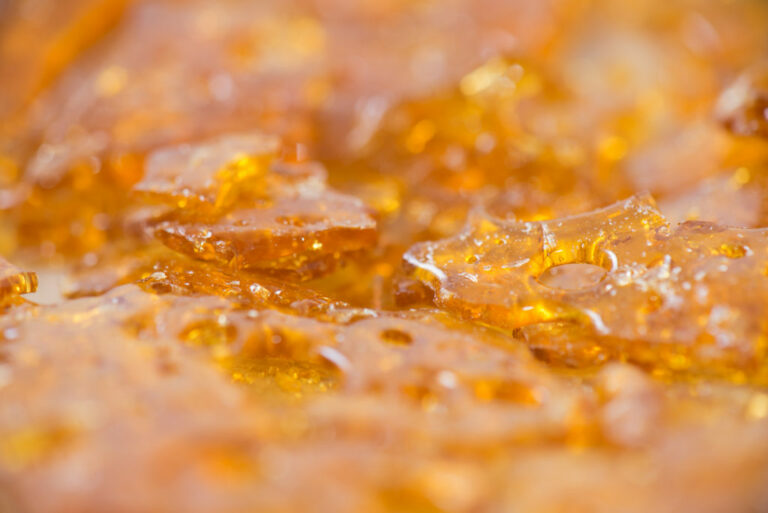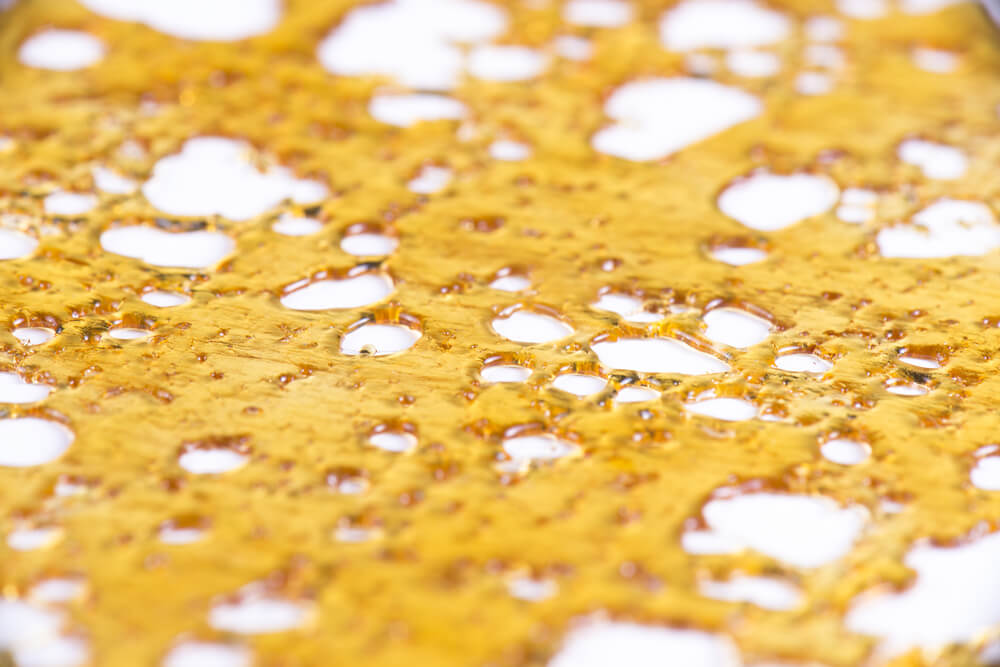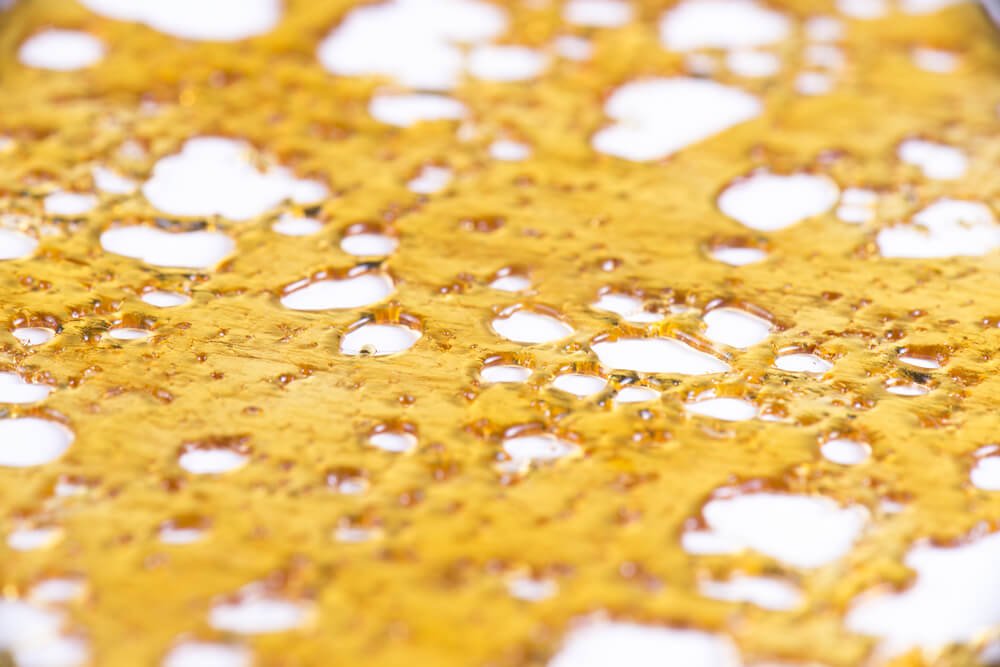When we think of wax the first thing that most of us imagine is BHO, which stands for butane hash oil. The fact of the matter is that most BHO isn’t actually oily in texture at all. One of the most popular BHO products is referred to as shatter, but also goes by names like ‘snap-and-pull’ and ‘amber glass’. These products garnered the name shatter because of how they snap, or shatter like glass, when we break off a piece with our dab tool. Most shatter is clear enough to see through and comes in various shades, from a clear gold to brown to magenta. Some shatter products end up gooey and gummy once we take them home or leave them out, but well-blown shatter will stay solid and be easy to work at room temp. Those who use shatter generally prefer to dab it, but it can also be put into a quartz or ceramic vape pen and be vaped using that method.
What Do I Do With It?

Shatter products are popular with cannabis patients who need a longer lasting, more intense effect. They’re also very popular in the recreational market. Another draw of dabbing and vaping concentrates is that they’re virtually smell-less, especially when compared to the way the skunk smell sticks with us after combusting flower. To get started dabbing we need a dab rig, torch, and tool. If we get a banger then we will also need a carb cap. Any stainless steel or heat resistant surface that cuts off the oxygen to the piece will work as a carb cap. But there are a lot of awesome heady carb caps made by glass artists.
For vaping, we need a tool, battery, and vape head that works with concentrates. This does sound like a lot of startup, but it’s possible to see what shatter is capable of without investing in a new rig or vape. To try out shatter for the first time, consider breaking off a piece of the extract and putting it on top of a bowl. This is a lot like hashish, but it is different in that it is pulled from the start materials using a harsh solvent.
Crumble, budder, and other extraction products are generally sold alongside shatter. Those who go with shatter over these other types of wax are generally interested in the consistency. But the reason these products are different usually comes down to the extraction and purification methods, equipment, and the start materials that were used.
How Is Shatter Made?

The reality is that shatter can be made with many types of solvents, not just butane. What really makes an extract into ‘shatter’ isn’t the solvent it’s the consistency of the wax. Oftentimes shatter is made using a closed loop extraction system with butane, hexane, propane, or a mixture of them all or some of them as a solvent. The materials are put into a column that is part of the system and then the chosen solvent is run through the system to ‘blast’ the start materials. This part of the process will extract the valuable compounds from the dried plant materials, but it is only the first step since at this point the solvents are still in the extract.
To purge the shatter, extractors will run a combination of air and heat over the wax slab in a vacuum oven. This is repeated until the solvent is completely purged out. After this process we should be left with the oils, lipids, and terpenes from the original start materials. It takes a skilled extractor to pull finished shatter from the vac-oven. That’s why in some cases our extract will require further polishing. When it comes to pulling shatter, there are two polishing processes, winterization and dewaxing.
The winterization process uses grain alcohol to redissolve the extracts for the purpose of separating out the solvents. Winterizing will remove the excess waxes and fats (often called the ‘undesirables’) but oftentimes it will also remove the terpenes. Since terpenes are responsible for the flavor and aromas of cannabis many consumers prefer dabbing a wax that is terpene rich. Dewaxing involves running the raw extract through a Büchner funnel attached to a passive vacuum. This method requires more finesse so that the butane is pulled out before it evaporates and leave the separated fats and desirable oils behind. It isn’t as efficient as winterizing but it does preserve the terpenes more than grain alcohol.
There are a lot of factors that transform flower into an end product like shatter, crumble, or another type of wax. Moisture content of the start materials has a lot to do with whether or not a product is ‘glassy’ or a different non-shatter texture. More moisture in the buds we start with tends to lead to more water in the end product which makes the wax less stable. Similarly, a higher terpene content tends to create a ‘saucier’ end product.
Another very prominent part of whether or not a shatter is stable is the temperature. Any extract is going to get gooey and melt at extremely high temperatures, that being said, staying stable at room temperature is still a must for shatter. For those of us that do end up with ‘shatter’ that gums up and is hard to work with, all is not lost. Working with wax that has gummed up and lost its consistency can be hard but it can be easier if you heat up the tool first.
Shatter is a type of wax, extract, and/or concentrate that is well sought after by medical and recreational users at cannabis dispensaries around the world. To make it, many extractors use expertise and precision in the purge. As we continue learning more about cannabis extraction the products will only become more refined. Though tweaked extraction techniques and methods are consistent in the industry, shatter is a product with staying power on dispensary shelves.

Leave a Reply